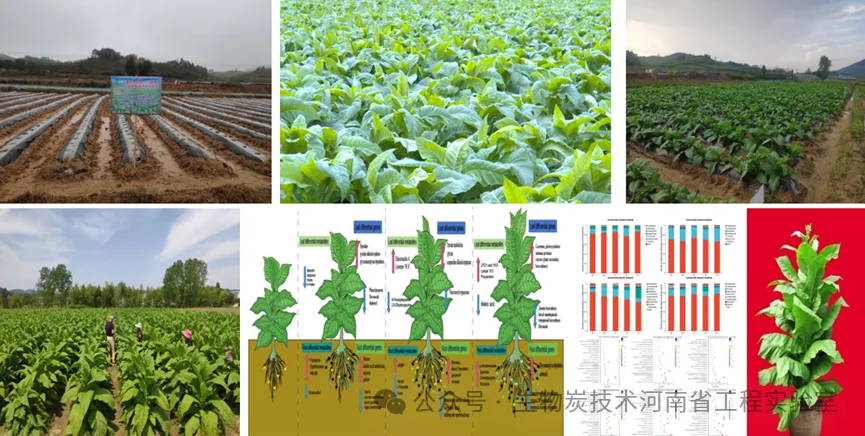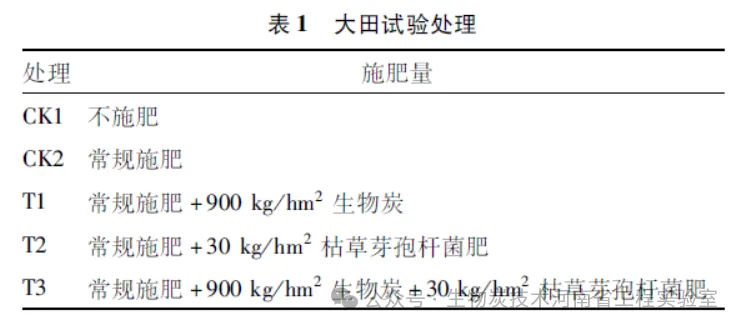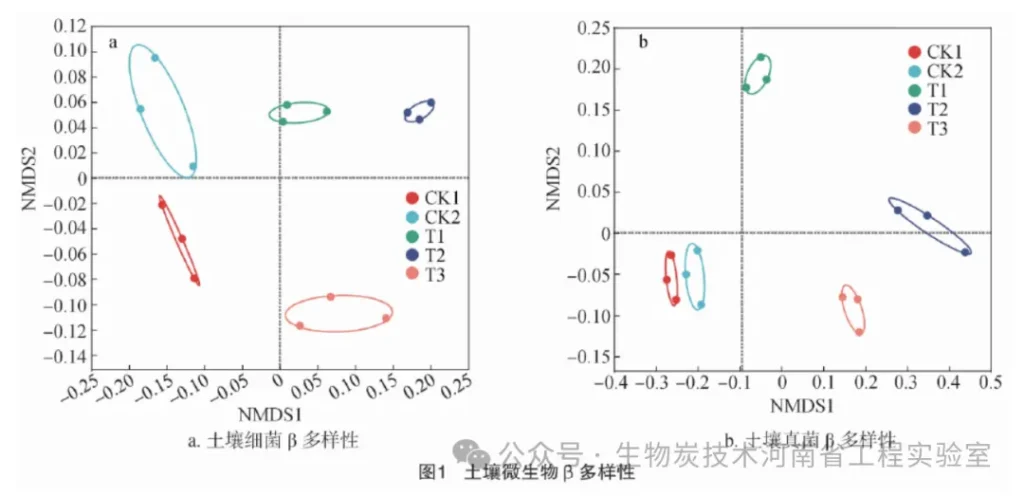


Research Background
Fujian Province is located south of the Nanling Mountains and in the mid-low mountainous areas of the central-southern Wuyi Mountains, with a subtropical monsoon climate. It is one of the three major high-quality tobacco leaf production areas in China, with a local tobacco planting area of approximately 200,000 hectares. Tobacco-rice rotation is the main planting pattern in this region. Under the long-term tobacco-rice planting pattern, the carbon-nitrogen imbalance and microbial community structure imbalance in tobacco-planting soil have become unfavorable factors for high-quality tobacco leaf production. Soil microorganisms are important indicators of soil quality changes, and their community structure plays a crucial role in maintaining soil structure, organic matter degradation, and material and energy cycling.
Biochar is a carbon-rich black solid material produced by high-temperature pyrolysis of agricultural and forestry waste under low-oxygen or anoxic conditions. It has characteristics such as loose porosity, large specific surface area, abundant hydroxyl and carboxyl functional groups, aromatic structures, and high charge density, endowing it with excellent ion exchange and adsorption capabilities. Currently, significant research progress has been made in the application of biochar for regulating soil physical structure, chemical properties, nutrient content, and microbial communities. On this basis, this study aims to investigate the positive effects of combined application of Bacillus subtilis and biochar on soil conservation, microbial regulation, and tobacco leaf quality, providing data support for soil health biological regulation in long-term tobacco-rice rotation areas of southern tobacco regions and the realization of high-quality tobacco leaf production.
Ⅰ. Materials and Methods
The field experiment was conducted from 2021 to 2022 at the Lixin Tobacco Station in Jianning County, Sanming City, Fujian Province, located in the mid-low mountainous areas of the central-southern Wuyi Mountains. The unique geographical location and subtropical monsoon climate give the region warm and humid conditions, abundant rainfall, and long sunshine hours, providing favorable natural ecological conditions for tobacco leaf production. The soil type in this area is sandy loam, with basic physical and chemical properties as follows: organic matter content 21.76 g/kg, total nitrogen 1.89 g/kg, available phosphorus 23.23 mg/kg, available potassium 181.86 mg/kg, and pH 4.72. The experiment adopted a randomized block design with a total of 5 treatments, each with 3 replicates. The tested tobacco variety was Cuibi No. 1. Conventional fertilization included 800 kg/hm² tobacco-specific fertilizer (N:P₂O₅:K₂O=12:7:22), 300 kg/hm² potassium sulfate (K₂O≥50%), and 300 kg/hm² potassium nitrate (K₂O≥43.5%, N≥13.5%). The physical and chemical properties of biochar were as follows: specific surface area 16.71 m²/g; bulk density 0.21 g/cm³; pore volume 0.029 m³/g; pH 9.05; total carbon 465.30 g/kg; total nitrogen 8.30 g/kg. All fertilizers were uniformly applied to the soil once before transplanting.

Ⅱ. Experimental Results
2.1 Analysis of Soil Physical and Chemical Properties Under Different Treatments

2.2 Analysis of Soil Microbial Community Composition Diversity Under Different Treatments
The experimental results showed that the bacterial community Shannon index, ACE index, and Chao1 index in treatments T1 and T3 were higher than those in CK1 and CK2, while the fungal Shannon index, ACE index, and Chao1 index in T3 were lower than those in CK1 and CK2, though without significant differences. This indicates that the combined application of biochar and Bacillus subtilis significantly improved soil bacterial community diversity. After biochar application, there was no significant difference in the fungal Shannon index compared with CK2, but the Shannon indices in T2 and T3 decreased by 28.64% and 7.04%, respectively, and the Chao1 indices decreased by 20.16% and 12.61%, respectively, compared with CK2.


2.3 Soil Microbial Community Composition Under Different Treatments
As shown in Figure 2a, the dominant bacterial phyla in the soil were Proteobacteria, Actinobacteriota, Firmicutes, Chloroflexi, and Acidobacteriota. The relative abundances of Proteobacteria in T1, T2, and T3 were lower than that in CK2, decreasing by 4.55%, 7.82%, and 10.09%, respectively. Ascomycota, Mortierellomycota, and Basidiomycota accounted for the majority of the soil fungal community (Figure 2b). The relative abundance of Ascomycota in T1 decreased by 16.59% and 15.92% compared with CK1 and CK2, respectively, while the relative abundances of Mortierellomycota and Basidiomycota increased by 48.95% and 27.37% compared with CK1, and by 43.14% and 30.43% compared with CK2, respectively. The relative abundances of Ascomycota in T2 and T3 increased by 5.84% and 5.17%, respectively, compared with CK2. The combined application of biochar and Bacillus subtilis increased soil bacterial community evenness and decreased fungal community evenness. Single application of Bacillus subtilis and combined application of biochar with Bacillus subtilis both disrupted soil fungal community evenness, causing the fungal community to develop toward an increase in dominant phyla and inhibiting the growth and reproduction of non-dominant fungi. The combined application of biochar and Bacillus subtilis alleviated this inhibitory effect.
2.4 Effects of Soil Basic Nutrients on Soil Microbial Communities
2.5 Analysis of Neutral Aroma Substances in Flue-Cured Tobacco Under Different Treatments
The combined application of biochar and Bacillus subtilis had the most significant effect on the accumulation of aroma substances in tobacco leaves, significantly increasing the contents of two major categories of neutral aroma substances: browning reaction products and chlorophyll degradation products. These included seven subcategories of neutral aroma substances: benzaldehyde, furfural, 2-acetylfuran, 6-methyl-5-hepten-2-one, dihydroactinidiolide, megastigmatrienone, and neophytadiene.
Ⅲ. Research Summary
Application of biochar, Bacillus subtilis, and their combination all improved the physical and chemical properties of long-term tobacco-rice rotation soil in southern tobacco regions, regulated soil microbial community structure, coordinated tobacco leaf chemical composition, and increased the content of aroma substances in tobacco leaves. Among them, the combined application of biochar and Bacillus subtilis showed the best effect, which is conducive to soil conservation and the sustainable development of high-quality tobacco leaves.
Acknowledgment: We thank the Fujian Provincial Tobacco Bureau and Sanming Tobacco Company for their strong support, which ensured the smooth progress of the experiment.
